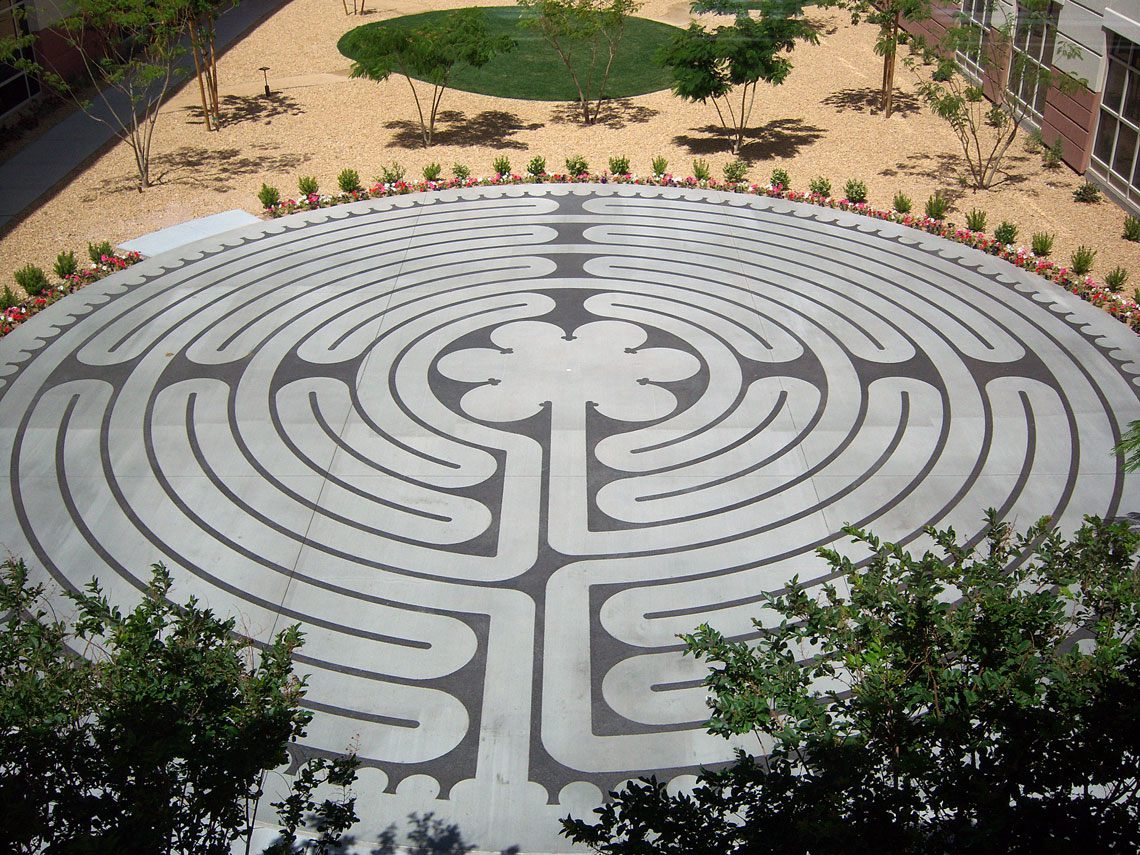
Labyrinth
A universal image representing the path of life.
What is the Labyrinth?
The labyrinth offers us a way of journeying, inviting us into a sacred, quiet place. It is a place where we can experience profound silence; a place where we can abandon the busyness of life, to escape the fast lane, to take a daily mini vacation; a place that offers us the opportunity to be present to the Holy One and to our inner selves. To walk the labyrinth is to make a pilgrimage to discover something about ourselves and God. The labyrinth is not magic, but it is full of mystery. It produces different results for everyone - or perhaps none at all. To walk the labyrinth is to take a precious “time out” - to be refreshed. There is no dogma associated with the labyrinth. A person simply brings his or her personal thoughts and spiritual needs - maybe a specific problem or an important life decision to be made.
There are some issues related to our human condition and to our destiny that require contemplation. Humans need to set aside their usual tasks and take the time to seriously reflect on these issues. Such contemplation has at least two prerequisites: 1) it takes time, and 2) it requires some modicum of silence. The labyrinth is a perfect vehicle to satisfy both prerequisites.Moments of silent contemplation allow the profound truths of life to sink in.
Suggestions for Walking the Labyrinth
The labyrinth is a path for prayer and meditation. Collect yourself before you start. Sit and rest at one of the benches for a while. Take off your shoes if weather permits. Walking barefoot on sacred ground is a rewarding experience. Think of different people, events, situations, places or things in your life to develop a specific intention as you walk. Get centered.
There are many ways of walking: Two are the WAY OF SILENCE and the WAY OF IMAGE. In choosing the way of silence, it might be helpful to focus on breathing. The way of image might be done by reciting a prayer or a name for God over and over to yourself. Ask yourself: How am I loved? How do I love? In either way or in some other manner best suited to you, be open to your heart and mind. Pay attention to your thoughts as they rise, then let them go.
The labyrinth is a place of presence; allow yourself to be present to yourself and to God. The labyrinth is a teacher; let it teach you through the mysterious power of God. As you walk the path, thoughts and ideas may rise up for you and in you - often in refreshing and startling ways.
Some people feel a sense of confusion as they first start. Remember that there is only one path in and one path out - you will not get lost.
Here are a Few Suggestions for Ways to Walk the Labyrinth
You may pass other people or allow others to step around you. The path leads two ways : those going in will meet those coming out.
History of the Labyrinth
Three-fold Mystical Tradition of Walking the Labyrinth
The second stage is Receiving or “ILLUMINATION” and is found in the center of the labyrinth. After quieting the mind of the first part of the walk, the center presents a new experience. There is illumination, insight, clarity and focus. Stay in the center as long as you like. It is often at this stage in the walk that people find insight into their situation in life or clarity about a certain problem. As you enter the center, the instruction is simple: enter with an open heart and mind and receive what is there for you.
The third stage is Integrating or “UNION” which means “empowerment and taking ownership.” It begins when you leave the center of the labyrinth and continues as you retrace the path that brought you in. At this stage, the meditation takes on a grounded, more energized feeling. Many people who have had an important experience in the center feel that this third stage of the labyrinth gives them a way of integrating the insights they have received. It empowers, invites, even pushes us to be more authentic and confident and to take risks with our gifts in the world.
- to release & quiet oneself
- to be open and receive
- and to that was gained back out into the world
There are three stages but one path, and it is different for everyone. Be still and enjoy this sacred pilgrim’s walk.

